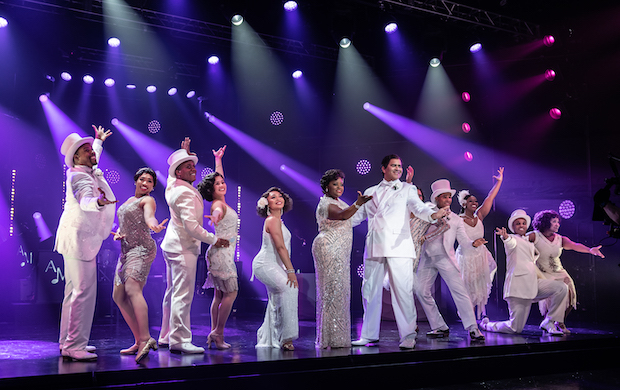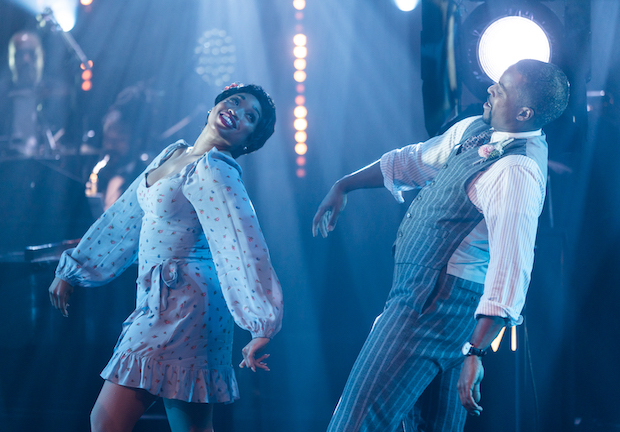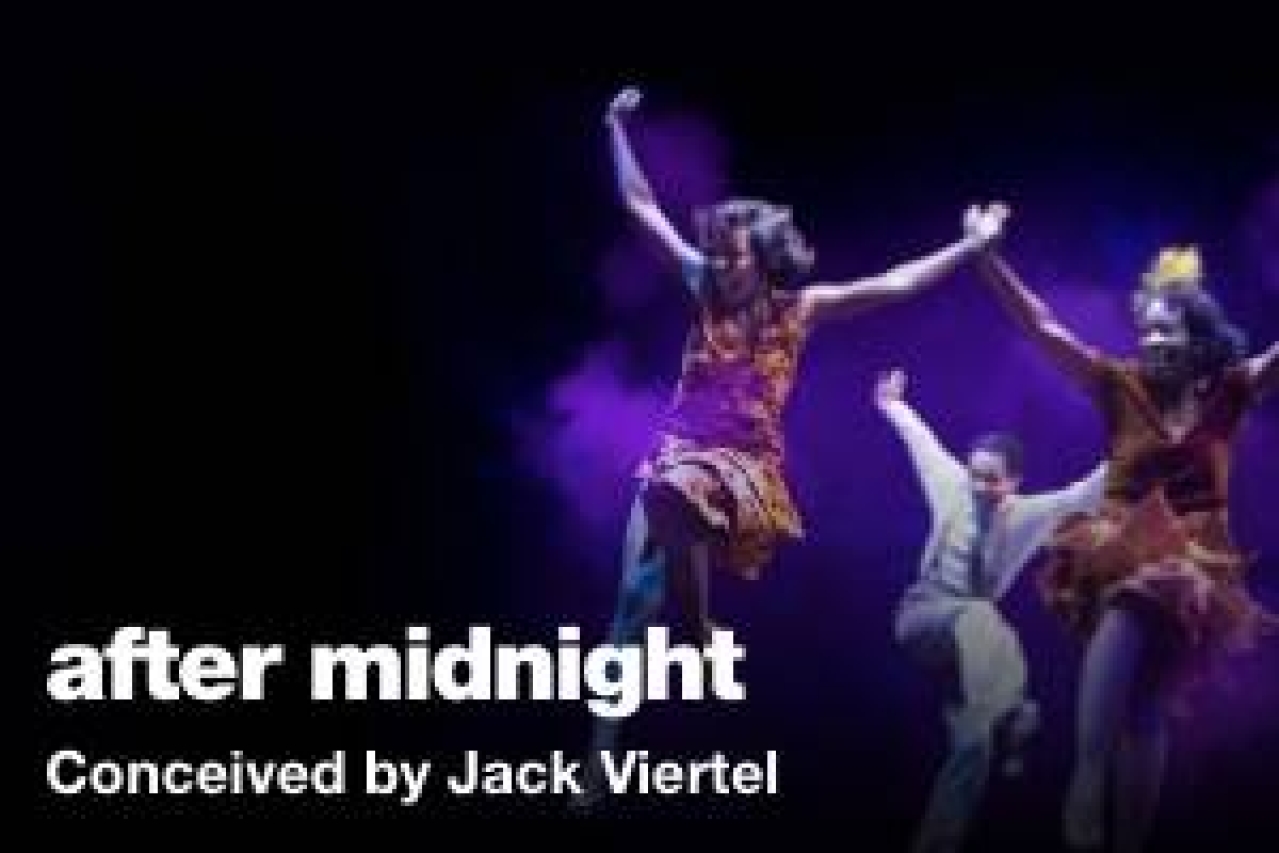Review: Black Joy Takes Center Stage in After Midnight

(© Christopher Mueller)
This past year has been pretty heavy. Between Covid, street protests for racial justice, and a bitterly divisive presidential election, Americans have had good reason to feel anxious and despondent, rendering joy a precious commodity. That makes a show like After Midnight, an ebullient celebration of the Harlem Renaissance, feel like an absolute gold mine of lightheartedness and good old-fashioned fun. You can beam some of that directly into your living room with Signature Theatre's new film version of the show, now available to stream as part of that company's "Signature Features" season.
Conceived by Jack Viertel, After Midnight (which ran on Broadway 2013-14) takes the form of a variety show at Harlem's Cotton Club. For 90 minutes, we are treated to pure entertainment from a cast of singers and dancers performing some of the best music from the Jazz Age, composed by the likes of Cab Calloway, Harold Arlen, and (especially) Duke Ellington. A master of ceremonies (Christopher Jackson) ties it all together with poetic interludes by Langston Hughes.
After Midnight makes a strong first impression: The camera pans from a street sign marking the intersection of Lenox Avenue and West 135th Street to show Jackson reciting a mash-up of Hughes poems including "Wonder" and "Juke Box Love Song." The orchestra rumbles under his words like a passing subway, revving into Ellington's "Daybreak Express," a locomotive overture that introduces us to the entire cast. They strut across the stage like elegant figures escaped from the paintings of Aaron Douglas and Archibald Motley. Their coy expressions invite us into a world of late-night revelry that can be conjured any time of day with this streaming production.
Several individual performers stand out: Phillip Attmore and DeWitt Fleming Jr. set a brisk pace with the duet "Happy as the Day Is Long," featuring athletic tap dance in three-piece suits (detailed period costumes by Dede Ayite). Nova Y. Payton shines in all of her numbers, especially her rendition of "Stormy Weather," which rolls in slow before blowing us all away with its gale force. Jodeci Millhouse, who can do everything the male dancers do but in heels, absolutely dazzles in the tap-and-tails medley "Raisin' the Rent/Get Yourself a New Broom." Shayla S. Simmons delivers the Sidney Easton and Ethel Waters number, "Go Back to Where You Stayed Last Night," with hilarious intensity. Jackson leads the cast with inimitable charisma and a winning smile, embodying the joy in every moment.
Jared Grimes, a featured dancer from the Broadway production, directs and choreographs here. One of the notable aspects of the Broadway run was its ability to showcase the idiosyncratic talents of cast members, like the breakdancers Julius "iGlide" Chisolm and Virgil "Lil' O" Gadson. While Grimes never fully recaptures the physics-defying synthesis of old and new in that act, he does allow his cast to show off what they've got: Attmore wows during the penultimate number, "Tap Mathematician/It Don't Mean a Thing," with his own daring choreography (Grimes originally performed the number at the Brooks Atkinson Theatre).

(© Christopher Mueller)
Music director Mark G. Meadows backs the performers with a seven-piece band, bouncing up and down on his piano bench as a delightful method of keeping time. Every note is clear under Ryan Hickey's sound design, while Mike Baldassari's lighting wraps musicians and actors alike in the blue embrace of the Harlem night.
Grimes has worked with director of photography Justin Chiet and editor James Gardiner to exploit the power of cinema while maintaining After Midnight as a theatrical event: Transitions between acts are impossibly tight, while instant quick changes inject an element of Hollywood magic.
It is not the same as seeing the show in person, but this filmed version of After Midnight brings a little bit of nightlife into your living room. It is a particularly exuberant manifestation of the lasting impact Black artists have made on American popular culture, and it couldn't come at a better time.











